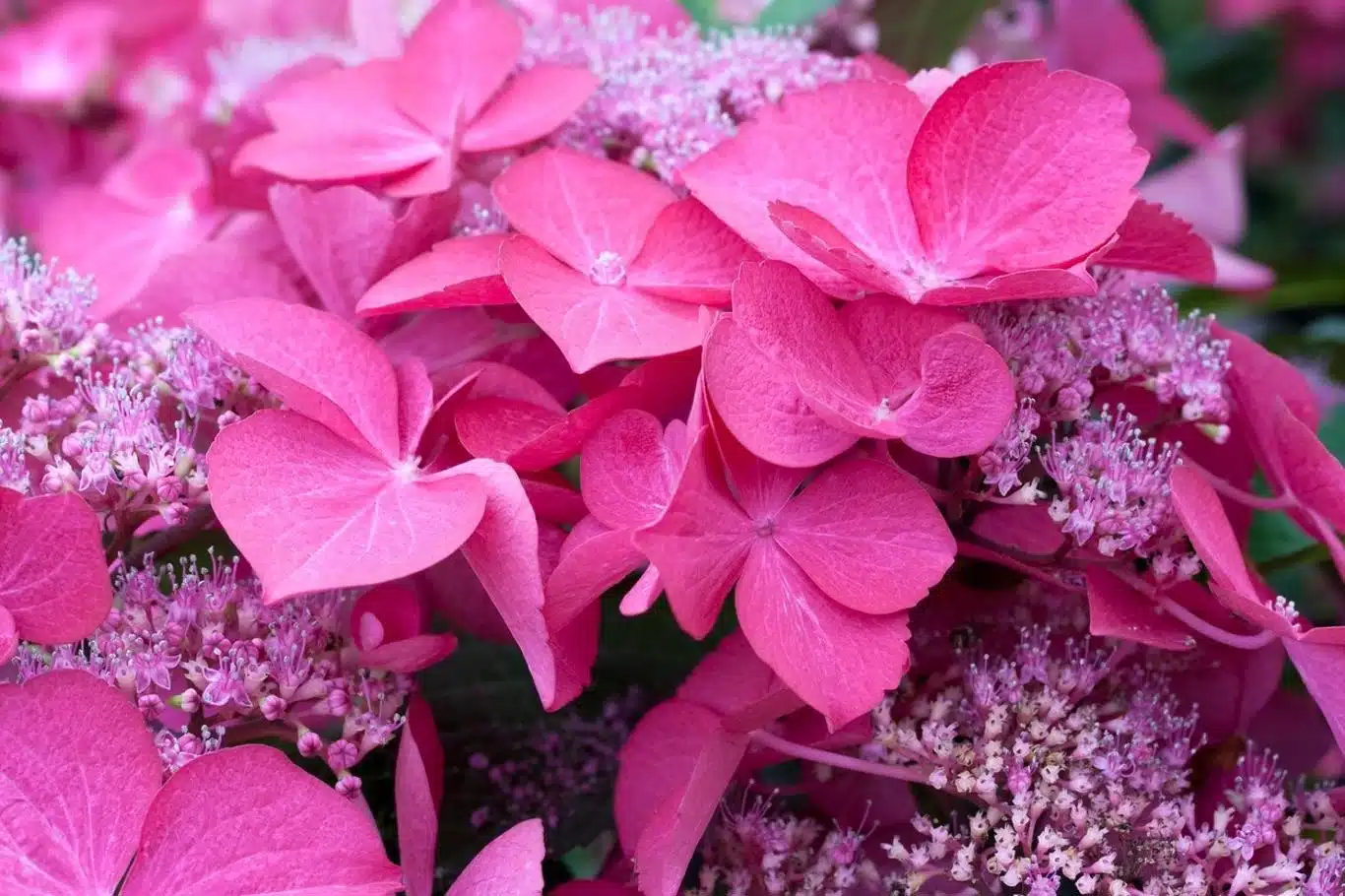Hydrangeas, with their lush blooms and diverse colors, have captured the hearts of gardeners and flower enthusiasts around the world. These versatile and stunning flowering shrubs offer a spectrum of colors, shapes, and sizes, making them a beloved addition to gardens, landscapes, and floral arrangements. In this journey through the world of hydrangeas, we will explore the different types of hydrangeas and their unique characteristics, helping you appreciate and cultivate these beautiful blooms in your own outdoor spaces.
1. Understanding Hydrangea Basics
Before delving into specific types, let’s understand some fundamental aspects of hydrangeas:
- Growing Zones: Hydrangeas thrive in various climate zones, with specific varieties suited to different regions.
- Soil pH Influence: Soil acidity affects flower color in some hydrangea species, with acidic soil producing blue flowers and alkaline soil yielding pink flowers.
- Pruning Needs: Pruning requirements vary among hydrangea types, impacting bloom production and plant health.
2. Popular Types of Hydrangeas and Their Characteristics
a. Bigleaf Hydrangeas (Hydrangea macrophylla)
- Flower Types: Bigleaf hydrangeas feature mophead (rounded) or lacecap (flat-topped) flower clusters.
- Color Variability: Flower color can range from vibrant blues and pinks to purples and whites, influenced by soil pH.
- Varieties: Include ‘Nikko Blue,’ ‘Endless Summer,’ and ‘Twist-n-Shout,’ among others.
b. Panicle Hydrangeas (Hydrangea paniculata)
- Flower Structure: Panicle hydrangeas display cone-shaped flower clusters that transition from white to pink as they mature.
- Hardiness: Tolerant of a wide range of growing conditions, making them suitable for different climates.
- Varieties: Notable cultivars include ‘Limelight,’ ‘PeeGee,’ and ‘Little Lamb.’
c. Oakleaf Hydrangeas (Hydrangea quercifolia)
- Leaf Shape: Named for their oak leaf-shaped foliage, which turns vibrant colors in fall.
- Flower Form: Conical panicles of white flowers that age to pinkish hues, with long-lasting blooms.
- Distinctive Bark: Develops exfoliating bark that adds winter interest to the landscape.
d. Smooth Hydrangeas (Hydrangea arborescens)
- Flower Appearance: Rounded clusters of white or creamy flowers, with varieties like ‘Annabelle’ known for large, showy blooms.
- Adaptability: Thrives in various soil types and tolerates more sun than some other hydrangea types.
- Pruning: Typically pruned in late winter or early spring to encourage vigorous growth and abundant blooms.
3. Caring for Hydrangeas
- Sun and Soil: Most hydrangeas prefer partial shade to full sun and well-draining, moist soil rich in organic matter.
- Watering: Provide regular watering, especially during hot weather, to maintain soil moisture.
- Fertilization: Apply a balanced fertilizer in spring and early summer to support healthy growth and blooming.
- Pruning: Know the pruning needs of your specific hydrangea type, as improper pruning can affect flowering.
4. Design Ideas and Uses
- Garden Borders: Create stunning borders or hedges with hydrangeas of varying types and colors.
- Container Gardening: Grow compact hydrangea varieties in containers for patio or balcony displays.
- Cut Flowers: Harvest hydrangea blooms for fresh or dried flower arrangements, showcasing their beauty indoors.
5. Enjoying the Timeless Beauty
Hydrangeas not only dazzle with their vibrant blooms but also symbolize grace, beauty, and enduring charm in gardens and floral design. Whether adorning your landscape with their lush foliage and flowers or adorning your home with their cut blooms, hydrangeas offer timeless beauty and a touch of elegance to any setting.

